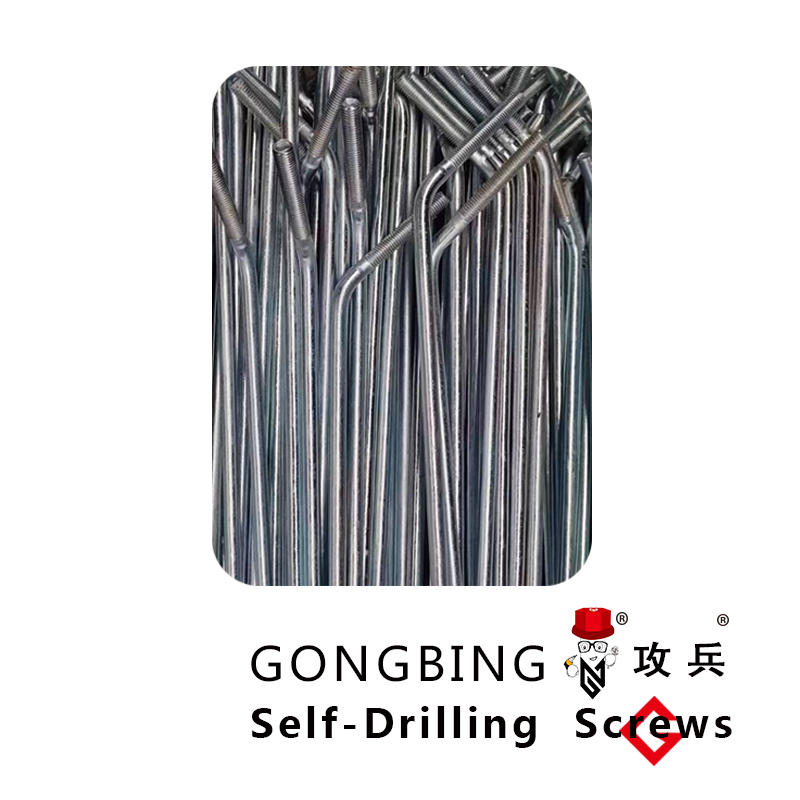foundation bolts design
Foundation Bolts Design Essential Elements for Structural Integrity
Foundation bolts play a crucial role in the stability and durability of various structures, from industrial buildings to residential homes. These structural components are used to anchor equipment, machinery, and structural frameworks to concrete foundations, thereby ensuring the integrity and safety of the entire system. The design of foundation bolts involves a careful consideration of various factors that influence their performance, including load requirements, environmental conditions, and material selection.
Understanding Foundation Bolts
Foundation bolts are typically embedded in concrete and act as a support system for structural elements above. They come in various shapes and sizes, including L-shaped, J-shaped, and straight bolts, depending on their specific applications. The most commonly used materials for foundation bolts are carbon steel and alloy steel, often with protective coatings to enhance durability and resistance to corrosion.
Key Design Considerations
1. Load Specifications One of the primary considerations in the design of foundation bolts is the load they will bear. This includes both static and dynamic loads that the structure might experience during its lifespan. Engineers must calculate the maximum loads that foundation bolts will encounter, including those from equipment, environmental factors, and occupancy loads. The design should ensure that the bolts can withstand these forces without yielding or breaking.
foundation bolts design

2. Environment The environmental conditions in which the foundation bolts will be located are critical for designing their specifications. Factors such as temperature variations, humidity, exposure to chemicals, and potential for corrosion must be assessed. In corrosive environments, for instance, stainless steel or galvanized bolts may be necessary to prevent degradation. Special coatings can also be applied to improve resistance against rust and wear.
3. Anchor Design The method of anchorage directly affects the performance of foundation bolts. There are several anchor design types, including cast-in-place anchors, expansion anchors, and adhesive anchors. Each type has its advantages and is suitable for different applications. The choice of anchor design should be driven by factors such as the type of loads, the condition of the concrete, and the extent of required anchorage.
4. Connection Details The connection between the foundation bolt and the supported structure is another vital aspect of the design. This connection must be robust enough to prevent any rotational or lateral movements that could compromise stability. Engineers often utilize washers, nuts, and other fasteners to create secure connections that distribute the load evenly across the structure.
5. Standards and Regulations Compliance with industry standards and local building codes is essential when designing foundation bolts. Organizations such as the American Institute of Steel Construction (AISC) and the American Concrete Institute (ACI) provide guidelines for the design and installation of anchoring systems. Adhering to these standards ensures that the foundation bolts will perform reliably under expected service conditions.
Conclusion
The design of foundation bolts is a pivotal aspect of engineering that directly impacts the safety and longevity of structures. Through meticulous attention to load requirements, environmental conditions, anchorage methods, connection details, and compliance with regulatory standards, engineers can ensure the effective performance of foundation bolts. As construction practices evolve and new materials are developed, the design of foundation bolts will continue to improve, contributing to safer and more resilient infrastructures. In summary, a thoughtful approach to foundation bolt design not only supports structural integrity but also enhances the overall performance and reliability of engineering projects.
-
Weatherproof Plastic Expansion Anchors for OutdoorNewsJun.06,2025
-
Sustainability in the Supply Chain: Eco-Friendly TEK Screws ProductionNewsJun.06,2025
-
Load-Bearing Capacity of External Insulation FixingsNewsJun.06,2025
-
Double Head Bolts: Enhancing Efficiency in Industrial MachineryNewsJun.06,2025
-
Corrosion Resistance in Chipboard Screws: Coatings for Wholesale DurabilityNewsJun.06,2025
-
Butterfly Toggle Bolts : Enhancing Structural ResilienceNewsJun.06,2025
